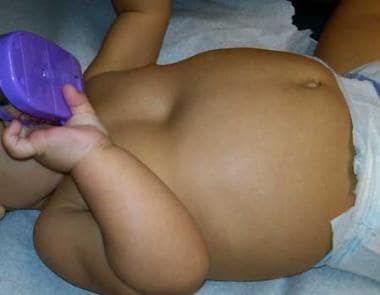Many of these deformities are frequently noticed during puberty but may present much earlier in childhood. Chest pain related to abnormal bone and cartilage growth.

3 Steps For Fixing Flared Ribs Without Taking A Surgery Highly Successful Method That Is Proven For Repairing Flared Ribs Pectus Excavatum Ribs Ribbed Flares
Pectus excavatum is a congenital chest wall deformity that is caused by growth abnormality of the cartilage that connects the ribs to the breastbone (sternum).

Pectus excavatum baby pictures. (i love the belly button picture btw) i remember the first time i noticed it. Studies say that 1 out of 500 children struggle with this. A depression of the sternal bone.
Because of the deep depression, the lower ribs can stick out and give the appearance of a potbelly in. Pectus excavatum, also known as concave chest or funnel chest, is a deformity of your child's chest wall. Recent studies revealed that pectus excavatum in babies may be genetic.
With pectus excavatum, the sternum goes inward to form a depression in the chest. This causes a depression in the chest that can range from mild to severe. Pectus excavatum is the most common chest wall deformity, occurring in about one in 500 children and accounting for more than 90 percent of congenital chest wall deformities.
Pectus excavatum, pectus carinatum and other chest wall anomalies. The depression in the chest is due to abnormal growth of the cartilage that attaches the sternum to the ribs. While most patients do not have symptoms, those with severe.
The cartilage is extra long and pushes the breastbone back into the body. Pectus excavatum is a sunken spot in the center of a child's chest. Pectus excavatum affects about one in 1,000 children and is four times as common in boys as in girls.
Pectus excavatum is a congenital deformity of the chest wall that causes several ribs and the breastbone (sternum) to grow in an inward direction. Usually, the ribs and sternum go outward at the front of the chest. Pectus excavatum is an abnormal development of the rib cage in which the sternum (breastbone) grows inward, resulting in a noticeable and sometimes severe indentation of the chest wall.
It has a male predominance, with a ratio of 3:1 male to female. This causes a depression of the sternum and the chest has a “sunken in” or “funnel chest” appearance. Pectus excavatum is a condition in which, instead of being level with the ribs, the breastbone (sternum) is ‘sunken’ so that the middle of the chest looks ‘caved in’.
See more ideas about pectus excavatum, heart and lungs, cody miller. Pe represents a cosmetical concern for almost the patients affected, but in most cases, it. Before you whip out your dictionaries to look up this term, i will clarify:
The condition is not always noticeable at birth, but is. It is often present at birth but. Asymmetrical shapes of the deformity are more common in older patients, and not babies.
Gracelin has a pectus excavatum. The deformity is mostly cosmetic, but in some cases can cause problems with the heart and lungs, calling for surgical correction. The condition may not be noticed at birth.
2 boys (5 yo, 1 yo) 7 years ago. When the infant is at rest, a small depression can be seen over the sternal area. The condition affects more boys than girls.
The cartilage pushes the breastbone (sternum. It is the most common congenital deformity of the anterior chest wall and it produces a caved in appearance of the chest. The deformity can result in increased pressure on the heart and lungs during the growing period.
Commonly called “funnel chest,” pectus excavatum is a depression caused when the sternum (breastbone) is abnormally pushed inward. The breastbone, or sternum, and some of the ribs grow abnormally, causing a depression in the middle of the chest. It occurs mostly in boys and frequently more members in a family are affected.
Pectus excavatum, a deformity of the sternum and ribs caused by an unbalanced costochondral hypertrophy, is a congenital abnormality, with a prevalence of 1 per 1000 patients; Pectus excavatum can range from mild to severe, and your child may or may not have symptoms related to the heart or lungs. The next photo shows how the appearance changes with inspiration while crying.
It is caused by an overgrowth of cartilage as a baby's rib cage and breastbone (sternum) develop before birth. Both or just one side of the breastbone may be affected. (pectus excavatum is more common in males) who had the nuss procedure done at 15.
A worsening of symptoms as the child grows. A genetic predisposition to pectus excavatum has never been defined, although there. I noticed the water was pooling in it, and i was worried she was having retractions.
Pectus excavatum.say that 3 times fast. You can see it fairly well in these pictures. Pectus excavatum is caused by the abnormal growth in the chest of the connective tissues (cartilage) that attach the breastbone (sternum) to the ribs.
Also known as “sunken chest” or “funnel chest,” pectus excavatum can be corrected with the minimally invasive surgical technique called the nuss. My 7 month baby has pectus excavatum (sunken chest) close. Baby looks very similar to u/s pictures done at 20 weeks when we found out about his enhanced.
Pectus excavatum is where the sternum and ribs develop abnormally, causing the sternum to drop inward toward the spine and produce a caved in or sunken appearance of the. She was around 4 months old, and in the bathtub. Also known as funnel chest, pectus excavatum is most commonly an isolated congenital abnormality that results in no functional impairment.
He also has a couple of image issues and hates being topless around anyone other than me. It is found in one in 400 live births.

Postnatal Photograph Of The Child With Pectus Excavatum Download Scientific Diagram

Happy Heart Story Our Pectus Excavatum Experience Pectus Excavatum Happy Heart Health Inspiration

Nuss Procedure For Pectus Excavatum Background Indications Contraindications

Mengenal Pectus Excavatum Beserta Penyebab Dan Cara Mengobatinya

Kelainan Dada Cekung Berbahaya Kah Hbtkviorg

Mengenal Pectus Excavatum Beserta Penyebab Dan Cara Mengobatinya

Riley Byrne Is A Personal Trainer And Online Coach Specialised In Helping People With Pectus Excavatum Improve Thei Pectus Excavatum Tight Muscles Tight Quads

Penyebab Terjadinya Pectus Excavatum Alias Dada Cekung Orami

Pin On Kegunaan Esensial Oil

Nuss Procedure For Pectus Excavatum Pectus Excavatum Rare Disease Awareness

Help My Babys Chest Is Caving In Pectus Excavatum Dr Paul - Youtube

Penyebab Terjadinya Pectus Excavatum Alias Dada Cekung Orami

Dada Cekung Siang Bunda2sya Baru Jd Moms Nih Mau Tanya

Mengenal Pectus Excavatum Beserta Penyebab Dan Cara Mengobatinya
Mc Chest Wall Deformity Ka Funnel Chest Mostly Asymptomatic Cvs Dysfuction Very Rare As With Scoliosis Pectus Excavatum Chest Adolescence

Pectus Excavatum Johns Hopkins Childrens Center

Penyebab Terjadinya Pectus Excavatum Alias Dada Cekung Orami

Fix Pectus Without Surgery Pectus Excavatum Back Strengthening Exercises Yoga Relief

Pectus Excavatum My Tips For Organizing Surgery And Finding An Insurance Cover - Hubpages
